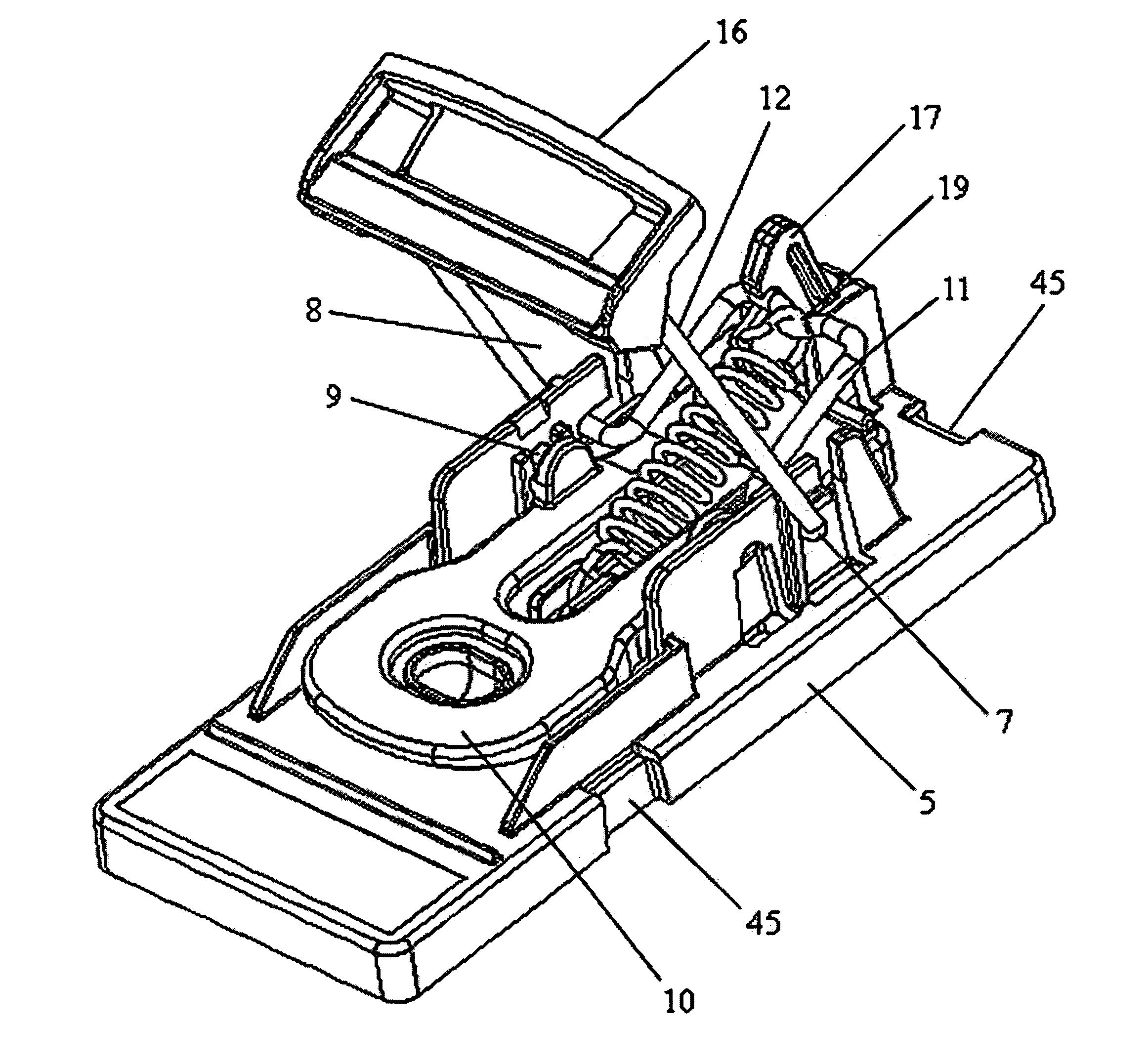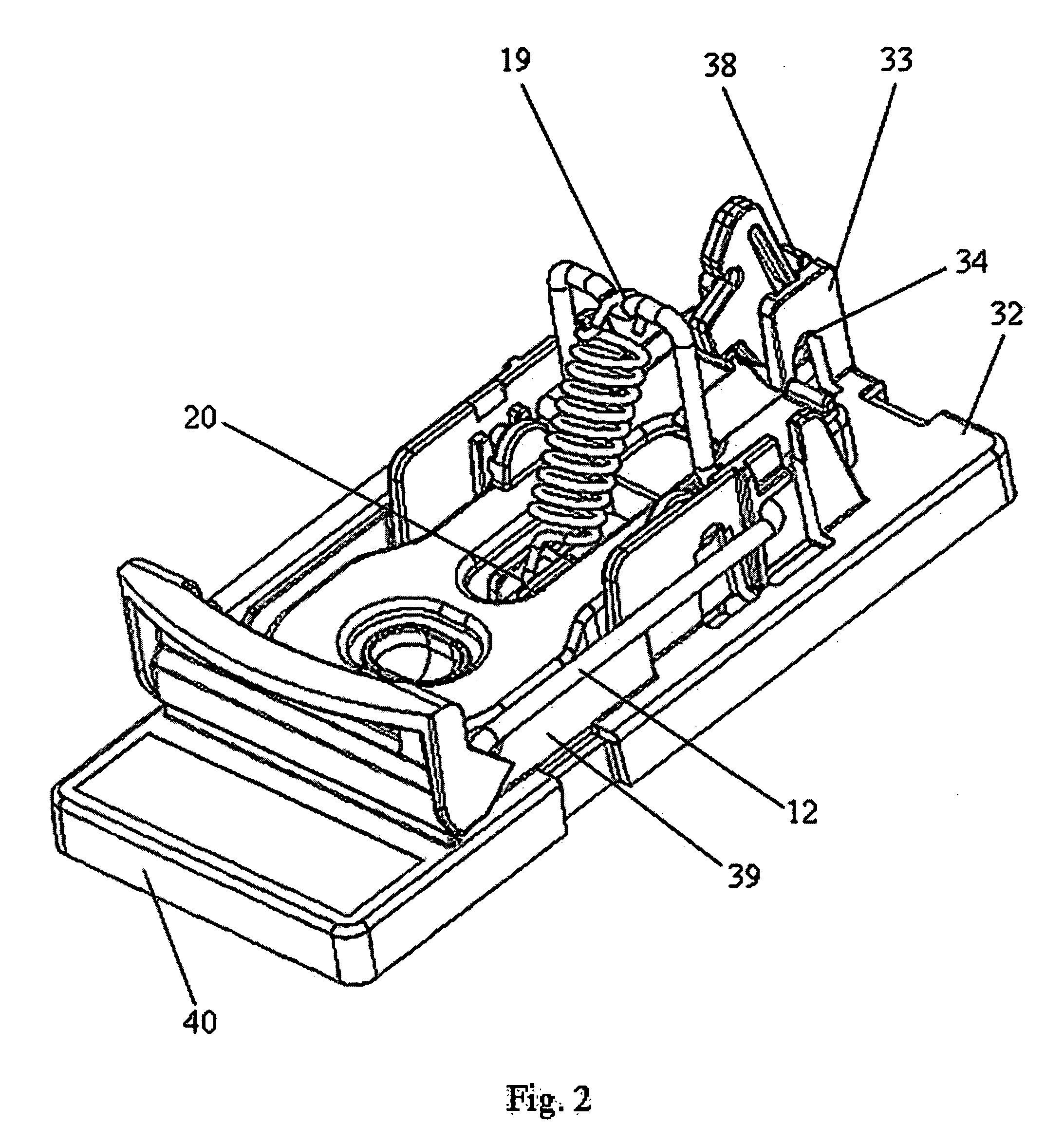Trap for rodents, in particular for mice and rats
a rodent and rodent technology, applied in the field of rodent traps, can solve the problems of limited efficiency of traps and inability to stack traps, and achieve the effects of reducing space requirements and shipping costs, efficient killing small rodents, and high striking for
- Summary
- Abstract
- Description
- Claims
- Application Information
AI Technical Summary
Benefits of technology
Problems solved by technology
Method used
Image
Examples
Embodiment Construction
[0039] According to FIGS. 1, 2, 6 and 7 that show the embodiment of the trap from different viewing directions, the trap comprises a base plate 1 that is illustrated separately in FIGS. 3 and 4. In the region of its front section, the base plate 1 is provided with a bait receptacle 4 that lies on its longitudinal axis 2 and extends upward from the upper surface 3 of the base plate 1. Wall-like holding elements 6 extend parallel to the longitudinal edges 5 of the base plate 1 from approximately the longitudinal center of the base plate into the rear section of the base plate 1 on both sides, wherein the first axis 7, i.e., the pivoting axis of the striking device 8 of the trap, as well as the second axis 9, i.e., the pivoting axis of the trigger device 10 of the trap, are guided transverse to the longitudinal axis 2 of the base plate 1 in said holding elements. FIG. 8 shows most clearly that the striking device 8 is realized in the form of a bracket with a first arm 11 and two identi...
PUM
 Login to View More
Login to View More Abstract
Description
Claims
Application Information
 Login to View More
Login to View More - Generate Ideas
- Intellectual Property
- Life Sciences
- Materials
- Tech Scout
- Unparalleled Data Quality
- Higher Quality Content
- 60% Fewer Hallucinations
Browse by: Latest US Patents, China's latest patents, Technical Efficacy Thesaurus, Application Domain, Technology Topic, Popular Technical Reports.
© 2025 PatSnap. All rights reserved.Legal|Privacy policy|Modern Slavery Act Transparency Statement|Sitemap|About US| Contact US: help@patsnap.com



